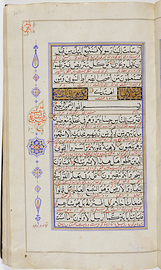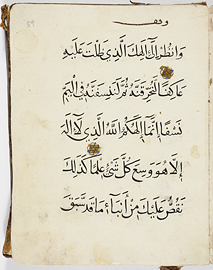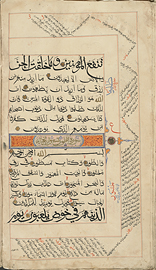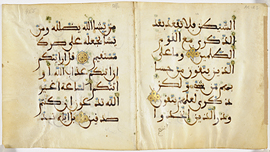“Tears upon the cheeks of chaste young women are no more beautiful than tears of a calamus in a manuscript.” 2 Throughout the manuscript period a great variety of scripts and styles of handwriting were used. Indeed, from a very defective script that hardly distinguished between various forms of letters and entirely lacked vocalization, Arabic developed into a vehicle of thought and culture without precedence in other civilizations. It is said that in the late Mamluk period (14th and 15th centuries) alone, Arab calligraphers had at their disposal some 42 scripts. Some scripts became entirely associated with either the type of work or subject matter. Thus, in the 8th and 9th centuries, almost all Qurʾans were executed in often very heavy Early Abbasid scripts (popularly known as Kūfī or Kufic). In the 10th century, there came onto the scene the New Abbasid style (previously known as Eastern or semi-Kufic). Large Qurʾans of the later Middle Ages were usually calligraphed in a script called muḥaqqaq, whereas the middlesize Ottoman Qurʾans were mostly executed in naskh. In the lands under Persian rule or influence, the script felt to be the most suited for poetry was nastaʿlīq. In the Maghreb, on the other hand, a very different family of scripts developed. Having their origins in the late 9th and early 10th centuries, these scripts and their letterforms are not learned individually according to specified norms, as is the case with the newer ‘proportioned’ scripts of the Islamic East. Instead, writing is learned by imitating complete words. There are great differences in style; some manuscripts were written with very thin nibs, others with thicker ones and the scripts vary from very small to very large, often spiky in appearance. Moreover, the form of a letter is never characteristic of a style. On a single page, executed by the same hand, one may encounter up to four different shapes of the same letter. Looking at some manuscripts, one forms the impression of admiring a composition rather like a spider’s web.
2 Aḥmad ibn Yūsuf, secretary of the Caliph al-Maʾmūn (d.833).





